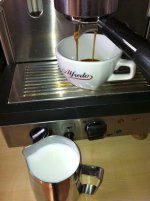I did have a look around the Sainsburies beer section last night but nothing above about 7% alcohol in some 'Vintage' beers. I went through all their better Ciders recently. I guess I'm just not all that interested by the flavours of those and the many and varied beers they do have. They sell some of the Fullers range including this one I think I've had when I went through their beers: Fuller’s ESB (Bottle/Keg) To my palate they just taste like beer but with slight variations.
Last edited:
oh Ian cant take caffiene anymore? thats horrible...its over-use is a clue into my late night/early morning snippishness  but i couldnt do without my illy
but i couldnt do without my illy
haha tis now a vice thread
 but i couldnt do without my illy
but i couldnt do without my illy
An externally hosted image should be here but it was not working when we last tested it.
haha tis now a vice thread
oh Ian cant take caffiene anymore? thats horrible...its over-use is a clue into my late night/early morning snippishnessbut i couldnt do without my illy
An externally hosted image should be here but it was not working when we last tested it.
haha tis now a vice thread
At that price I'll take a 5 pack!
Haha, now that's a mean trick. I explicitly block qusp (no hard feelings!) and then he appears in a full quote on the topic of coffee... 
Sorry, can't resist pointing out that there still seems to be stuff we seem to agree on.
(apologies for the cell phone picture quality)

Sorry, can't resist pointing out that there still seems to be stuff we seem to agree on.
(apologies for the cell phone picture quality)
Attachments
@ pinnocchio: that price is for a box of 12 x 250gm tins.. a slab-o-beans so to speak, its manufacturer direct that store, I was actually unaware of the web store in OZ until i googled it just now, but i was surprised to see that its actually more expensive to buy in bulk from them than it is to buy by the single tin at the deli or the odd grocery store that stocks it. Its only about 12-13aud for 250gm then and its quite strong for pure arabica, i dont find myself using as much as with say lavazza for example, so it only works out about 20% more expensive. I buy some Lavazza or Kimbo as well and only tend to have illy breakfast, noon and night with the rest the second tier offering.
Is there going to be anymore of these kits in the future?
In fact I would more likely be looking for already build kits (in 240V) as my electronic DIY capabilities are near 0 (under your noise floor, truly un-mesurable )
)
I am looking for exactly that kind of amplifier to feed my compression drivers and tweeters.
Some questions (sorry if some where already answered) :
- is it silent when turning on/off ?
- how is the DC offset? Is it DC coupled?
- what is the input impedance?
- how can the voltage gain be adjusted and can it be done with a simple switch?
thanks
In fact I would more likely be looking for already build kits (in 240V) as my electronic DIY capabilities are near 0 (under your noise floor, truly un-mesurable
I am looking for exactly that kind of amplifier to feed my compression drivers and tweeters.
Some questions (sorry if some where already answered) :
- is it silent when turning on/off ?
- how is the DC offset? Is it DC coupled?
- what is the input impedance?
- how can the voltage gain be adjusted and can it be done with a simple switch?
thanks
There are definitely some commonalities in people's hobbies around here! The following seem to go well together:
Audio
Coffee
Beer
Musical Instruments
Cycling
Woodworking
For whatever reason, if someone has one of the above hobbies, you can almost bet they have one or more of the others.
pos:
There will eventually be a commercial offering based on this amplifier, but it's likely to be a few months away, and it's not going to be cheap. It will also only be in complete form, and won't be offered as a kit.
Those who got in on this GB will be the only ones who get boards I'm afraid.
To answer your questions though:
Yes. There is a slight thump on turn on, but it's low enough that I comfortably connected them directly to a pair of ribbon tweeters and haven't had a problem. On turn off there is nothing detectable.
This depends on your luck with buffers and matching. There is no way I can think of to "match" the buffers before hand, so you get what you get.
Of my 6 amplifiers, the worst one is 9 mV and the best is 2mV.
Pretty much anything you want. If you build according to the schematic, it's a 10k input impedance, but that resistor can be increase up to 100k or decreased down to 600 ohms if you like.
You adjust the resistor values to get the gain you want. I pre-calculated values for a few different gains, but you could set it to whatever you like between about 1 and 30. Noise performance will get better with lower gains.
Using a switch is possible, but strongly discouraged. If you were really careful then using a relay might be an option, but behavior during gain changes could be quite bad. I suggest instead setting the gain to whatever you need and using an attenuator at the input.
Regards,
Owen
Audio
Coffee
Beer
Musical Instruments
Cycling
Woodworking
For whatever reason, if someone has one of the above hobbies, you can almost bet they have one or more of the others.
pos:
There will eventually be a commercial offering based on this amplifier, but it's likely to be a few months away, and it's not going to be cheap. It will also only be in complete form, and won't be offered as a kit.
Those who got in on this GB will be the only ones who get boards I'm afraid.
To answer your questions though:
- is it silent when turning on/off ?
Yes. There is a slight thump on turn on, but it's low enough that I comfortably connected them directly to a pair of ribbon tweeters and haven't had a problem. On turn off there is nothing detectable.
- how is the DC offset? Is it DC coupled?
This depends on your luck with buffers and matching. There is no way I can think of to "match" the buffers before hand, so you get what you get.
Of my 6 amplifiers, the worst one is 9 mV and the best is 2mV.
- what is the input impedance?
Pretty much anything you want. If you build according to the schematic, it's a 10k input impedance, but that resistor can be increase up to 100k or decreased down to 600 ohms if you like.
- how can the voltage gain be adjusted and can it be done with a simple switch?
You adjust the resistor values to get the gain you want. I pre-calculated values for a few different gains, but you could set it to whatever you like between about 1 and 30. Noise performance will get better with lower gains.
Using a switch is possible, but strongly discouraged. If you were really careful then using a relay might be an option, but behavior during gain changes could be quite bad. I suggest instead setting the gain to whatever you need and using an attenuator at the input.
Regards,
Owen
There are definitely some commonalities in people's hobbies around here! The following seem to go well together:
Audio
Coffee
Beer
Musical Instruments
Cycling
Woodworking
For whatever reason, if someone has one of the above hobbies, you can almost bet they have one or more of the others.
Indeed!
There will eventually be a commercial offering based on this amplifier, but it's likely to be a few months away, and it's not going to be cheap. It will also only be in complete form, and won't be offered as a kit.
Those who got in on this GB will be the only ones who get boards I'm afraid.
Holy bombshells batman.
There are definitely some commonalities in people's hobbies around here! The following seem to go well together:
Audio
Coffee
Beer
Musical Instruments
Cycling
Woodworking
For whatever reason, if someone has one of the above hobbies, you can almost bet they have one or more of the others.
indeed, you can throw photography and cooking or good food in there too i've found. in fact i'm looking to combine 2 of the above in a project this year at some point. I want to build an electrically assisted mountain bike for getting around Redcliffe and it will probably use silicon carbide transistors in what amounts to a chopper/power amplifier for the DC-AC convertor and an ADC->DAC for the throttle.
I need a hobby to get away from my hobby hehe
excellent! congrats I think it'll be popular, probably making a modular electronic multiamped crossover I reckon =) just a guesspos:
There will eventually be a commercial offering based on this amplifier, but it's likely to be a few months away, and it's not going to be cheap. It will also only be in complete form, and won't be offered as a kit.
awesome! we so rock hahaThose who got in on this GB will be the only ones who get boards I'm afraid.
cant wait to build it up in the coming ~2weeks
matching buffers hey? hmmm looks like the other guys are getting the dregs lol. so why so difficult to match the DC performance? couldnt you just feed it a sine wave through a cap and measure the DC at the output? or is it just that the meter or scope becomes part of the loop and the result corrected?
Turbon, I've been begging for pages for more PCB from others too with no luck
Thought I would give it a shot anyway...
...
Brgds
Last edited:
finished one channel, such a cute little amp! no issues with testing. i've got a few build tips i'll post to help others out with the process. havent tested with the output loaded as yet, will do that tomorrow. the transformer fits like a glove and performance is spot on.
Attachments
-
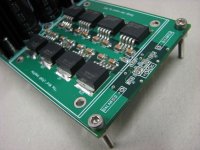 the wire LPUHP first channel_01May2012_0893.jpg182.4 KB · Views: 143
the wire LPUHP first channel_01May2012_0893.jpg182.4 KB · Views: 143 -
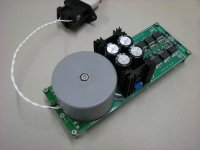 the wire LPUHP first channel_01May2012_0899.jpg159.9 KB · Views: 143
the wire LPUHP first channel_01May2012_0899.jpg159.9 KB · Views: 143 -
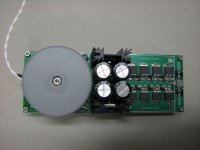 full the wire LPUHP first channel_01May2012_0869.jpg153.6 KB · Views: 321
full the wire LPUHP first channel_01May2012_0869.jpg153.6 KB · Views: 321 -
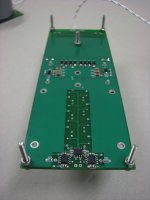 the wire LPUHP first channel_01May2012_0875.jpg119.7 KB · Views: 326
the wire LPUHP first channel_01May2012_0875.jpg119.7 KB · Views: 326 -
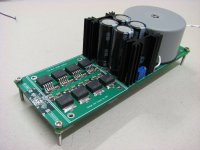 yes the wire LPUHP first channel_01May2012_0866.jpg175.7 KB · Views: 338
yes the wire LPUHP first channel_01May2012_0866.jpg175.7 KB · Views: 338 -
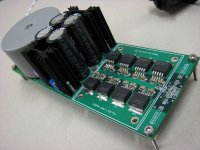 this the wire LPUHP first channel_01May2012_0895.jpg192.8 KB · Views: 345
this the wire LPUHP first channel_01May2012_0895.jpg192.8 KB · Views: 345 -
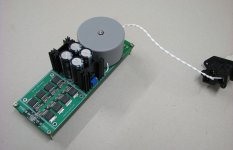 wide the wire LPUHP first channel_01May2012_0886.jpg138.3 KB · Views: 355
wide the wire LPUHP first channel_01May2012_0886.jpg138.3 KB · Views: 355 -
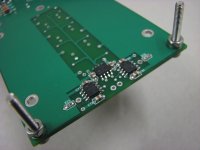 the wire LPUHP first channel_01May2012_0877.JPG557.8 KB · Views: 146
the wire LPUHP first channel_01May2012_0877.JPG557.8 KB · Views: 146 -
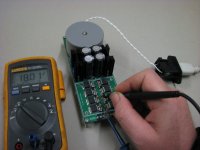 the wire LPUHP first channel_01May2012_0909.JPG547.4 KB · Views: 194
the wire LPUHP first channel_01May2012_0909.JPG547.4 KB · Views: 194 -
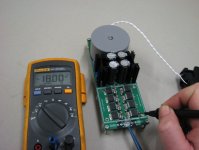 the wire LPUHP first channel_01May2012_0910.JPG482.7 KB · Views: 204
the wire LPUHP first channel_01May2012_0910.JPG482.7 KB · Views: 204
i'm thinking of getting a little heatsink for the input instrumentation amp, should be able to find a nice little short one that will cover all 3, they get toasty as, hottest thing on the board in fact  . but since i'm running them at max recommended voltage and they werent loaded, its hardly surprising
. but since i'm running them at max recommended voltage and they werent loaded, its hardly surprising 
now that I see the pics I can see a couple less than ideal fillets on 1 or 2 the buffers, such a good tool the camera, I couldnt see them in the wee hours, plus they are shiny so its a bit more difficult, purely aesthetic though; will have to touch them up
 . but since i'm running them at max recommended voltage and they werent loaded, its hardly surprising
. but since i'm running them at max recommended voltage and they werent loaded, its hardly surprising 
now that I see the pics I can see a couple less than ideal fillets on 1 or 2 the buffers, such a good tool the camera, I couldnt see them in the wee hours, plus they are shiny so its a bit more difficult, purely aesthetic though; will have to touch them up
Last edited:
TBH guys, if we are forced to look at other heatsink options, I would recommend we look towards heatsinking the underside, I reckon it gets hotter than the top and theres a fair bit more realestate there to pull it out from. can do both of course, the underside will need a bit of thinking. the 49990 are easy we can use adhesive backed little copper sinks there
I'm guessing when you say heatsinking the underside, you meant doing so for the purpose of cooling the LME49600's? Have you done any measurements of the temperature of the top heatsinking ground plane vs the bottom ground plane? I wonder about the efficiency of any cooling from the bottom, since the only direct path for heat to be transferred to the bottom would be from the through-plated vias and mounting holes.
Last edited:
both, the 49990 are the hottest thing temp wise, but the buffers will be putting more in as theres more of them and they are more firmly attached. nah my temp probe is pretty rooted, but there is no doubt the bottom is considerably hotter than the top, not a small amount at all and its far more accessible. the buffer bodies hardly have any heat at all, which is why Marks design was good because it had good contact with both. by itself, heatsinking the buffer bodies will take bugger all of the heat out IMO. have a look in the GB thread for other comments and suggestions, using an angle top and bottom, bolted through both and the PCB and if thats good enough just leave it, but otherwise bolt a heatsink to the vertical faces, perhaps even the sides of a case. they wont need to be huge fins if they need fins, the brackets will probably be enough if big enough
heat gets out however it can, if the vias are leading somewhere that isnt pulling heat out and you provide somewhere below clamped to the board where most of the heat is, its not going to choose the vias
besides, if it came to it, who cares if the amp is upside down inside the case.... I sure dont
alternatively of course if you dont need to be using +/-18vdc and can get away with 15-16 then that would save quite a bit too I imagine. and do remember this is unloaded other than the idle current, opc can probably say whether they cool down when driving speakers or heat up further as they are running more in class A than when in idle. I often have amps on when not playing music and this is almost winter here, it was 14 degrees when I did that test last night
they can probably handle it, it was just more heat than I was expecting
heat gets out however it can, if the vias are leading somewhere that isnt pulling heat out and you provide somewhere below clamped to the board where most of the heat is, its not going to choose the vias
besides, if it came to it, who cares if the amp is upside down inside the case.... I sure dont
alternatively of course if you dont need to be using +/-18vdc and can get away with 15-16 then that would save quite a bit too I imagine. and do remember this is unloaded other than the idle current, opc can probably say whether they cool down when driving speakers or heat up further as they are running more in class A than when in idle. I often have amps on when not playing music and this is almost winter here, it was 14 degrees when I did that test last night
they can probably handle it, it was just more heat than I was expecting
Last edited:
- Home
- Amplifiers
- Solid State
- The Wire - Low Power Ultra High Perfromance (LPUHP) 16W Power Amplifier
